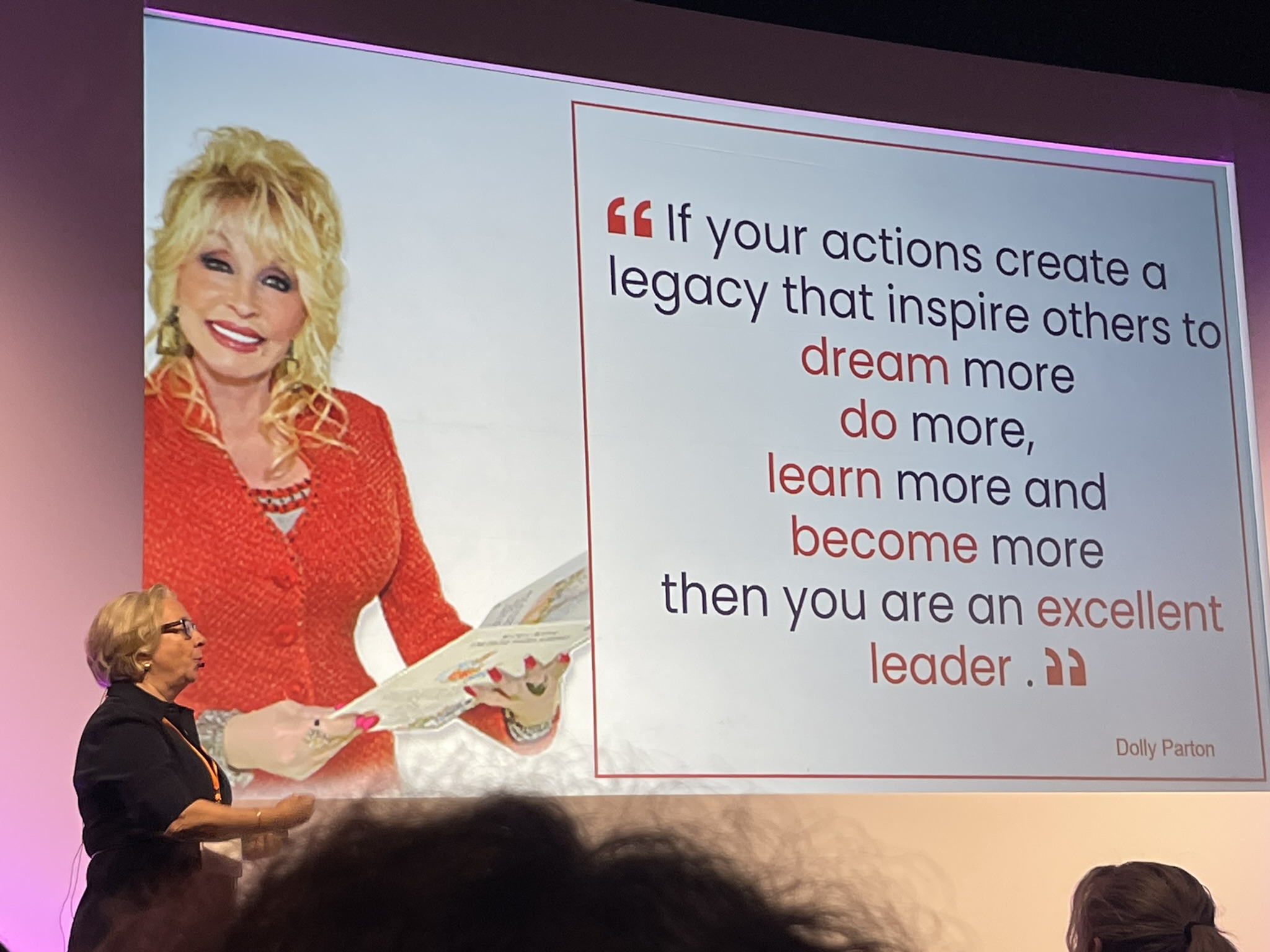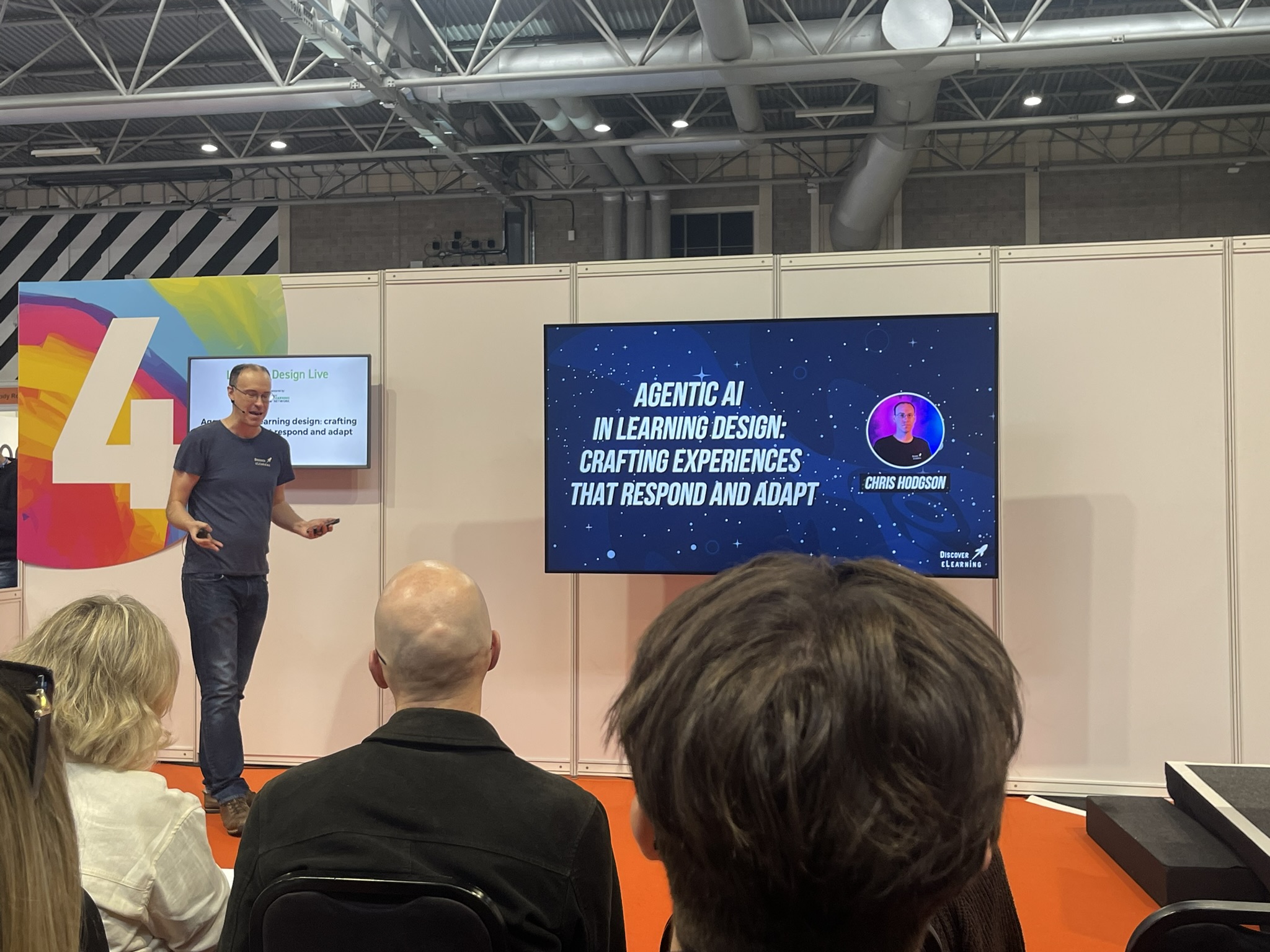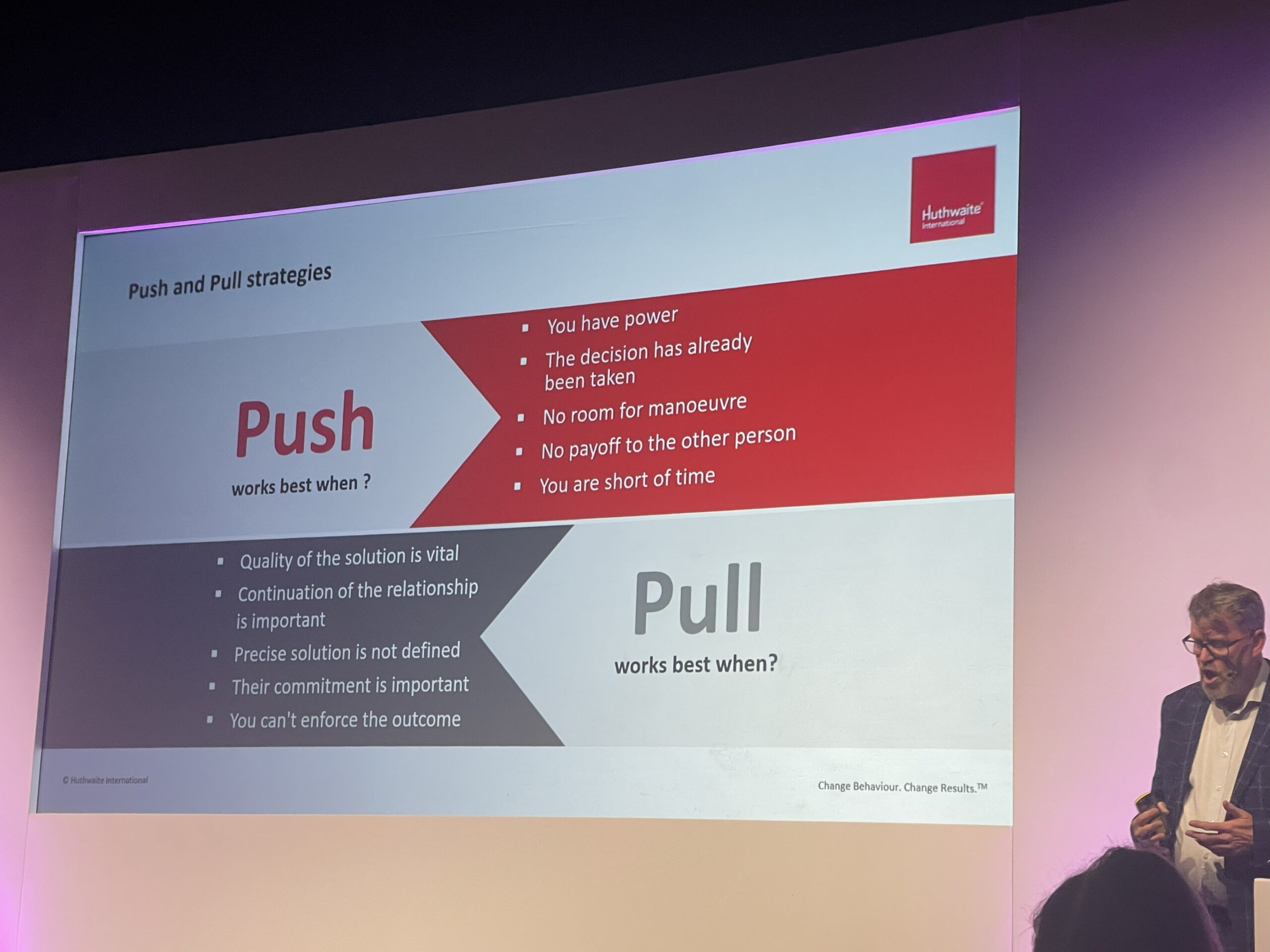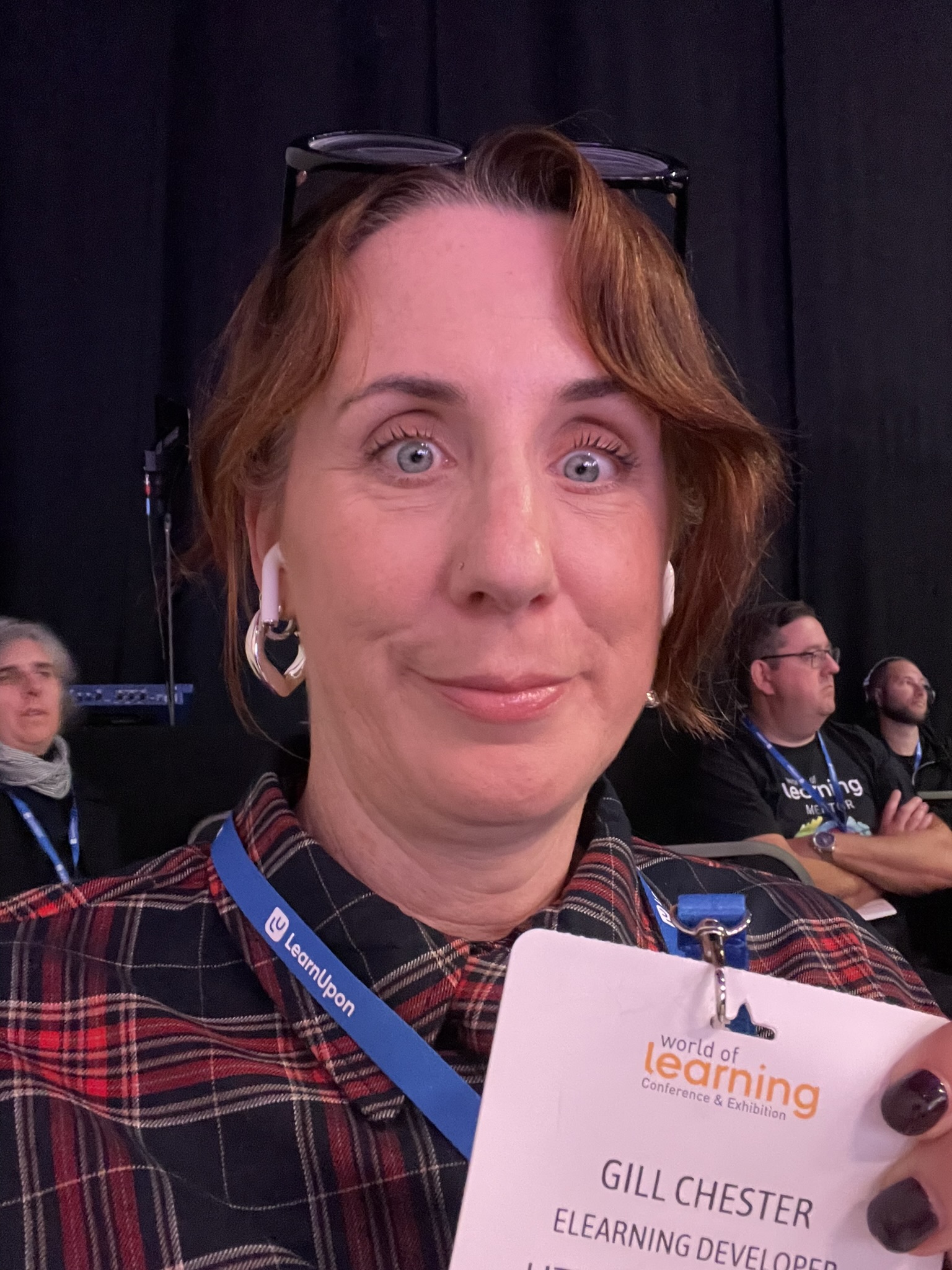Insights from day 2 of the World of Learning Conference 2025
Gill Chester shares key insights and takeaways from the second day of the World of Learning 2025 Conference, highlighting what’s most relevant for charity L&D professionals.
Session: From learning to leading: Owning our professional evolution in uncertain times
Laura Overton (Analyst and Author, Learning Changemakers)
Sarah Lindsell (Learning and Development Director, Global Human Capital, PwC)
Laura Overton and Sarah Lindsell opened the second day with a deeply personal reflection on growth, courage, and leadership in a changing L&D landscape, drawing from their own career journeys. Both reflected on more than two decades in the industry and the lessons they’ve learned about staying relevant, leading with purpose, and embracing disruption rather than fearing it.
Their message was simple but powerful: leadership is not about titles, it’s about impact. Laura shared how evidence and research opened doors for her when her voice wasn’t being heard, while Sarah spoke candidly about moments of challenge in her career, from returning early from maternity leave to protect her team, to holding her nerve through a near-failed project that later became a long-running success.
Together, they encouraged the audience to embody a “smart bold” mindset: business-first, open-minded, curious, and ready to let go of what no longer serves. They also reminded everyone that courage doesn’t have to be loud; “quiet leadership” through empathy, mentoring, and connection can be just as transformative. The session was filled with wisdom from the incredibly insightful Dolly Parton and concluded with her quote: “Find out who you are and do it on purpose.”
Key Insights for Charity L&D Professionals:
- Lead every day. You don’t need a title to have influence and impact.
- Make value undeniable. Show your contribution in commercial and strategic terms.
- Embrace disruption. Change creates energy and space for innovation.
- Stay curious. Ask better questions, not just for data but for understanding.
- Be brave. Courage and authenticity inspire trust and change.
This is directly connected with the session I’m writing about for the Charity Learning Consortium Conference in November, so it really resonated with me. Demonstrating impact in commercial and strategic terms and asking questions to understand and gather data… all part of providing and demonstrating value.
Session: Neurodiversity at work: Creating inclusive learning environments
Emma Hutchins (Talent and Capability Lead at Aviva)
Susi Miller (Founder and Director eLaHub, Author, LPI Learning Professional of the Year 2025)
This session began with a personal exploration of how learning can better support neurodivergent colleagues, thereby creating better learning experiences for everyone. We are massive fans of the unassuming but passionate Susi Miller, so I always make sure to attend her sessions at events.
Emma Hutchins spoke candidly about life with ADHD and the burnout often experienced by neurodivergent people who mask or overcompensate. She shared how her experiences as both a mother and daughter of neurodivergent women shaped her commitment to inclusion at Aviva, where over 450 colleagues identify as neurodivergent. Susi Miller discussed her journey with dyslexia and dyscalculia and how these have shaped her work designing accessible learning. Together, they emphasised that accessibility and inclusivity are not the same thing: a course can meet compliance standards yet still make learners feel excluded.
The pair demonstrated how small design choices, such as removing time limits, adding captions and transcripts, and allowing control over pace and movement, make a big difference. Their mantra, “progress over perfection,” reminded us all that inclusive learning is a continual journey, not a one-time fix.
Key Insights for Charity L&D Professionals:
- Start with accessibility in mind. Design it in from the beginning, not as an add-on.
- Simplify and structure. Clear instructions and logical layouts reduce cognitive load.
- Offer choice. Flexible formats and control over pace improve comfort and focus.
- Think beyond compliance. Inclusion is about how learning *feels*, not just what it meets.
- Progress over perfection. Every small change towards inclusion matters.
Exhibition Case Study: Alice in Typhoidland
Chris Hodgson, Discover eLearning
Although the conference and exhibition are well-integrated at World of Learning, I missed many of this year’s exhibition sessions. However, one session I was determined not to miss was a case study by Chris Hodgson from Discover eLearning on the Network Learning stage. Chris is one of the few elearning developers who is pushing the technical limits of Articulate’s authoring tools AND talking about how it did it.
In this session, he presented a case study on the award-winning “Alice in Typhoidland” project. This interactive, AI-powered learning experience uses agentic AI to support learning conversations. The tool uses an interface built in Articulate Storyline connected via his own eLearning Magic Toolkit to 11Labs and Gemini. Learners could talk to Alice, ask questions about typhoid, play short learning games, and even generate a personalised fact sheet based on their conversation.
Chris generously shared a glimpse into how AI can support more human-like digital learning: responsive, personal, and rooted in storytelling.
Key Insights for Charity L&D Professionals:
- AI can enable conversation, not just content. Agentic design enables learners to interact with characters, moving beyond passive information consumption.
- Scaffolding prevents overload. Carefully designed prompts help AI behave more like a coach, guiding learners step by step.
- Guard rails maintain focus. Planned reset points prevent learners from veering off into unrelated chat, keeping learning outcomes on track.
- Tailored personas matter. Narrow, well-defined agents perform better and feel more authentic.
- Low-cost experimentation is possible. Chris showed that real-time conversational AI can be affordable.
Panel: What is the role of learning leadership in developing organisational culture?
Dani Saadu (Global Head of Talent Management, Wireless Logic)
Marina Mologni (Global Talent Learning & Development Manager, Atlas Copco)
Pash Reddy (Senior Director, Global Head of Learning, S&P global Cl)
Sebastian Tindall (Strategic Enablement Director, Vitality)
This panel explored what organisational culture really means and how learning professionals can influence it. The speakers agreed that culture is not what appears in the annual report but what people actually do each day, how they think, feel and behave, especially under pressure.
Each panellist offered a slightly different take. For Sebastian Tindall, learning and culture are inseparable. He argued that every learning experience either reflects or shapes the organisation’s culture and suggested tying learning goals directly to performance frameworks. Pash Reddy described learning as both a mirror and a window; it shows who the organisation is today and reveals what it needs to become. Marina Mologni spoke about culture in global teams, highlighting how local “micro-cultures” can exist beneath the surface and the importance of curiosity, connection and role modelling to unite them. The panel cautioned against treating HR or L&D as the “custodians” of culture, reminding us that leaders set the tone and that everyone must share accountability.
Key Insights for Charity L&D Professionals:
- Culture is lived, not written. It shows in daily behaviour, not in value statements.
- Learning shapes culture. Every course and conversation reinforces that culture for good and bad.
- Stay connected. Curiosity and collaboration reveal hidden cultural barriers.
- Leaders must model it. Culture erodes fast when senior behaviour contradicts values.
- Be storytellers and challengers. L&D can amplify what works and raise awareness when it doesn’t.
Session: From Research to results: Design tactics for learning transfer
Melanie Martinelli (CEO, Institute for Transfer Effectiveness)
Fergal Connolly (Learning Transfer Expert, Mastercard)
In this session, Melanie Martinelli and Fergal Connolly tackled one of L&D’s biggest frustrations. Most learning doesn’t get applied, and only one in six people use what they learn during a training session once they return to work. Their session explored practical design choices to close that gap, focusing on the four levers within the 12 Levers of Transfer Effectiveness model. These levers, which are fully within an L&D team’s control, relate specifically to training design: clear expectations, content relevance, active practice, and transfer planning. The advice was to ensure learners understand their expectations, design activities that mirror real work, prioritise practice over theory, and always leave time during training for action planning.
The presenters challenged the audience to audit their own designs and replace “aha moments” with “apply moments”. They also reminded us that even small steps, such as clearer invitations or post-session follow-ups, can make a measurable difference.
Key Insights for Charity L&D Professionals:
- Set expectations early. Learners need to know what success looks like before a session starts.
- Keep content grounded. Use real examples from day-to-day work, not generic scenarios.
- Prioritise practice. Active learning is not enough; learners must try things out safely.
- Make time for transfer. Build action planning into the session rather than treating it as an afterthought.
- Start small. Even a single “next step” can help learning stick.
Session: Hearts, minds and money: Gaining buy-in for high-impact learning
Robin Hoyle (World of Learning Conference Chair & Author)
The final session from Robin Hoyle covered similar themes to Claire Kennady’s session. It explored how learning professionals can win the hearts and minds of their stakeholders, as well as their budgets. His focus was on designing high-impact learning that delivers measurable business results rather than simply completing courses.
He challenged the audience to rethink the learning process. To create meaningful change, people need shared language, opportunities to practice, and the psychological safety to make mistakes and learn from them. Learning should always connect to real work and be supported through coaching, feedback, and peer collaboration.
Robin also examined how persuasion works in L&D. He contrasted push behaviours such as pitching solutions and giving information with pull behaviours like asking questions, testing understanding, and building on others’ ideas. The latter, he argued, leads to stronger coalitions and longer-term impact. When we talk about what matters to others, not just our own learning tools, we gain influence.
Key Insights for Charity L&D Professionals:
- Focus on the real problem. Build learning around the challenges people face, not generic skills.
- Involve others early. Collaboration builds ownership and buy-in.
- Support learning transfer. Create space for practice, feedback, and reflection.
- Ask, don’t tell. Use curiosity and questioning to engage stakeholders.
- Build trust first. Winning hearts and minds makes funding conversations much easier.
About Gill Chester
Gill is passionate about helping charities and not-for-profits create learning experiences that truly make a difference. As the founder and Director of Little Man Project, an award-winning company she started in 2010, she leads a talented team developing creative, effective elearning for organisations around the world. With over 25 years’ experience, Gill loves building lasting partnerships and finding new ways to help teams learn, grow, and thrive.
Don’t miss part 1 of this blog, where Gill shares her insights from day 1 of the World of Learning Conference.

CL Consortium Ltd
Vine House, Selsley Road,
Stroud, GL5 5NN
The Charity Mentoring Network: A community platform that connects organisations, staff and volunteers together.







